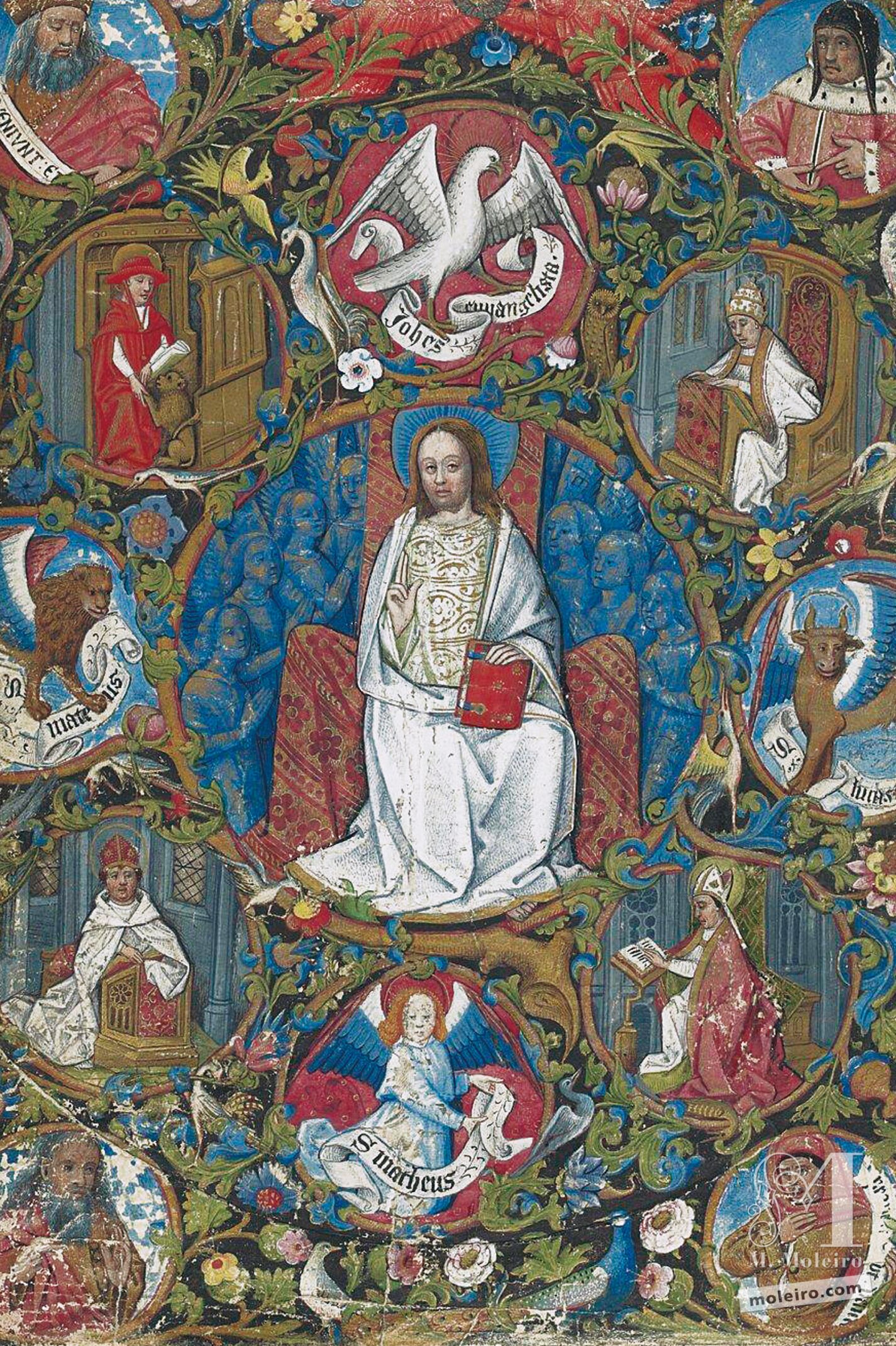This miniature in the Gospel lessons, i.e. at the very beginning of the book of hours, is in fact an engraving by Israhel van Meckenem altered by Robinet Testard. The original print depicted several of the main characters in the New Testament and the Church inside a circle, with John the Baptist in the centre, garbed in a camel skin and a large blanket, sitting in the desert pondering over an open book, and the Lamb of God lying on his right. Inside the medallions around him, separated by ornamental foliate motifs inhabited by birds, are the four symbols of the evangelists arranged in a Latin cross: John’s eagle at the top, Mark’s winged lion on the left, Matthew’s angel at the bottom, and Luke’s bull on the right. Depicted in other medallions are the four doctors of the Church: Jerome and the lion at the top on the left; Gregory at the top on the right, recognisable by his papal tiara; Augustine writing at the bottom on the right; and Ambrose at the bottom on the left.
Testard retains the circular layout used in the print but replaces John the Baptist by Christ in majesty giving a blessing and surrounded by angels. He follows the figures in the print almost exactly apart from changes to their faces and some slightly different postures. He fills the page by painting foliate motifs in the spaces around the circle and adding four prophets, one of whom – Jeremiah at the top on the left – can be recognised by his phylactery bearing a phrase from the book dedicated to him, “Ecce dies veniunt” (Jer. 23: 5-6).
Testard thereby provides a liturgical introduction for the book of hours in the form of a synthetic image of the Church which depicts the main pillars of the Christian faith in the Old Testament (prophets), the founding theologians (the four doctors) and the evangelists. Israhel van Meckenem’s print, a copy of an earlier print by Master E.S. dated 1466, was probably meant to be a pattern for a round object made of gold or silver, in all likelihood a paten. Testard’s direct use of the print here created a compact, effective diagram to which he made appropriate additions. The resulting image is a welcome change from the individual portraits of one or more evangelists usually found at this point.
Séverine Lepape
Curator
Musée du Louvre
